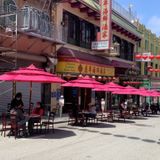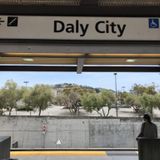RECENT ARTICLES

Chinatown Hosts City’s First ‘Shared Street’ - SF Weekly
For Chinatown restaurants, hope is in the open air. Community leaders are optimistic that the Chinatown Walkway Weekends program, which debuted this past Saturday and Sunday on Grant Avenue, could bring business, and revenue, back to struggling eateries and shops. The full closure of three city blocks to give restaurants and stores more space for outdoor service makes Grant San Francisco’s first “shared street,” and perhaps a portent of things to come as the pandemic rages on. “The main goal of this is to help the restaurants. The restaurants are really hurting,” says Harlan Wong, director...…For Chinatown restaurants, hope is in the open air. Community leaders are optimistic that the Chinatown Walkway Weekends program, which debuted this past Saturday and Sunday on Grant Avenue, could bring business, and revenue, back to struggling eateries and shops. The full closure of three city blocks to give restaurants and stores more space for outdoor service makes Grant San Francisco’s first “shared street,” and perhaps a portent of things to come as the pandemic rages on. “The main goal of this is to help the restaurants. The restaurants are really hurting,” says Harlan Wong, director...WW…

BART Beats NIMBYs, But Not at Every Station - SF Weekly
There’s something incongruous about stepping off of a packed BART train into a vast parking lot. The fact that the very same stations that allow so many people to get around without a car are themselves surrounded by cars does not make for great symbolism. Nor does it make much environmental, financial, or spatial sense, according to BART policy. Since 2005, the agency has been trying to transform its many surface parking lots into bustling mixed-use neighborhoods, with new homes, offices, and stores. Progress has been slow going. Many of the cities in which BART stations are located are...…There’s something incongruous about stepping off of a packed BART train into a vast parking lot. The fact that the very same stations that allow so many people to get around without a car are themselves surrounded by cars does not make for great symbolism. Nor does it make much environmental, financial, or spatial sense, according to BART policy. Since 2005, the agency has been trying to transform its many surface parking lots into bustling mixed-use neighborhoods, with new homes, offices, and stores. Progress has been slow going. Many of the cities in which BART stations are located are...WW…
- Total 2 items
- 1